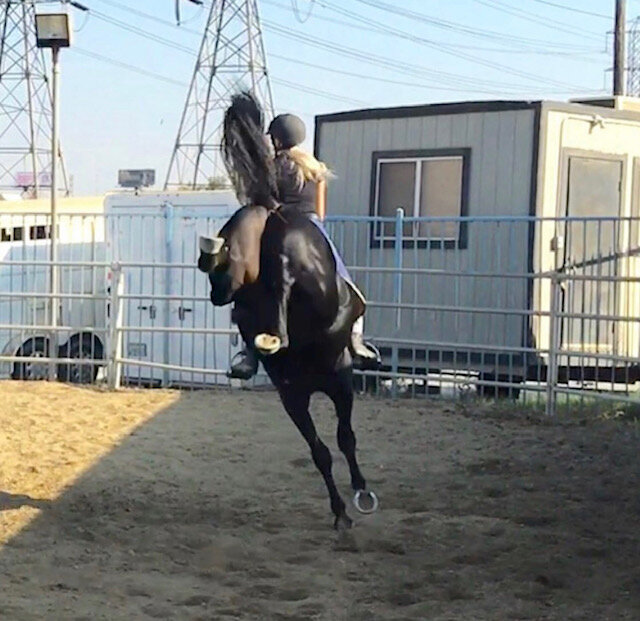Several years ago, before I was turned onto “groundwork” from methods such as Clinton Anderson, Parelli, Buck Brannaman, I had come across a difficult horse who had sticky feet syndrome. Sticky feet syndrome is where the horse is unwilling to move forward undersaddle for the rider, and can also be a problem on the ground leading as well. Little did I know I would soon be practicing what these clinicians have been preaching for years without even knowing it. Sticky feet syndrome is a common occurrence in horses and those horses are more commonly known as sulky or even lazy. I find most people don’t even know their horse has sticky feet as they are plucking along below the speed limit while the rider nags with every stride making no headway, while the horse is pinning it's ears and has a dull expression on it's face.
This brings me back to my first truly sticky-footed horse. It was a young TB gelding who had been off the track a year due to a tendon issue. He was a beautiful liver chestnut with 4 socks and a blaze. The first couple rides I put in on him where in the round pen where he complied moving forward. It wasn’t until we walked into the riding arena when the feet planted and suddenly my accelerator pedal was no longer working. I sat on his back, kicking the crap out of him like a child on a naughty pony, but he stood as still as a statue. No matter how much I kicked or whipped while I was aboard him, his stubbornness way outlasted my physical efforts.
Scratching my head, I knew I had a clever horse on my hands who simply didn’t want to work. I had to get one step ahead of him and figure him out. After all, I couldn’t let him win! What came to mind was to make him work really hard on his own in the round pen and to work less when I am on his back. So, I would give him the first opportunity to go forward, the second he foot planted, I took him to the adjoining round pen and made him run, and run, and run. I wasn’t trying to expel energy, but rather make him understand that if he doesn’t comply this will be what he has to do - run. Sticky footed horses are just that, lazy who don’t want to work. I was hoping I could use a bit of psychology to get him to comply. After I got his heart rate up and he was wanting to stop, I’d hop on and if he went a round without sticky feet, I’d stop, pat him and put him up. After a couple days of doing this, I’d start off in the round pen, ride out of it into the big arena and test him. If sticky feet occured, we went right back into the round pen and I rode him hard in the round pen for a few mins, then back out and tried the arena again. After a couple weeks of this, the horse started to figure out it was much less work to comply from the get go rather then having to put up a fight and work really hard.
Once I was able to actually work him in the arena, he’d start to come up with other tactics to get out of working by tossing in a buck or a half-rear to try to intimidate me enough to let him have his way. So, I decided to just put him over some poles and see if this engaged him enough to change his mind about “work” and voila, that was the missing puzzle piece he needed. He loved the poles and loved jumping. After 6 months of hard work on my part, he was happily coursing 2’3” fences and anyone could ride him at that point. He later went on to be a young girl’s event horse and never stuck his feet again.
Today I have come up to the times the clinicians mentioned earlier in this post, and took note that they used similar tactics to get the horses to comply and working. If I had known those methods before this horse came into my barn, I would have recognized the signs right away and would’ve known what to do immediately and could have resolved the issue much sooner then I had. I am happy to say constructive ground work is now implemented in all of my horses from day one and makes the retraining process much easier for the horse and myself.
